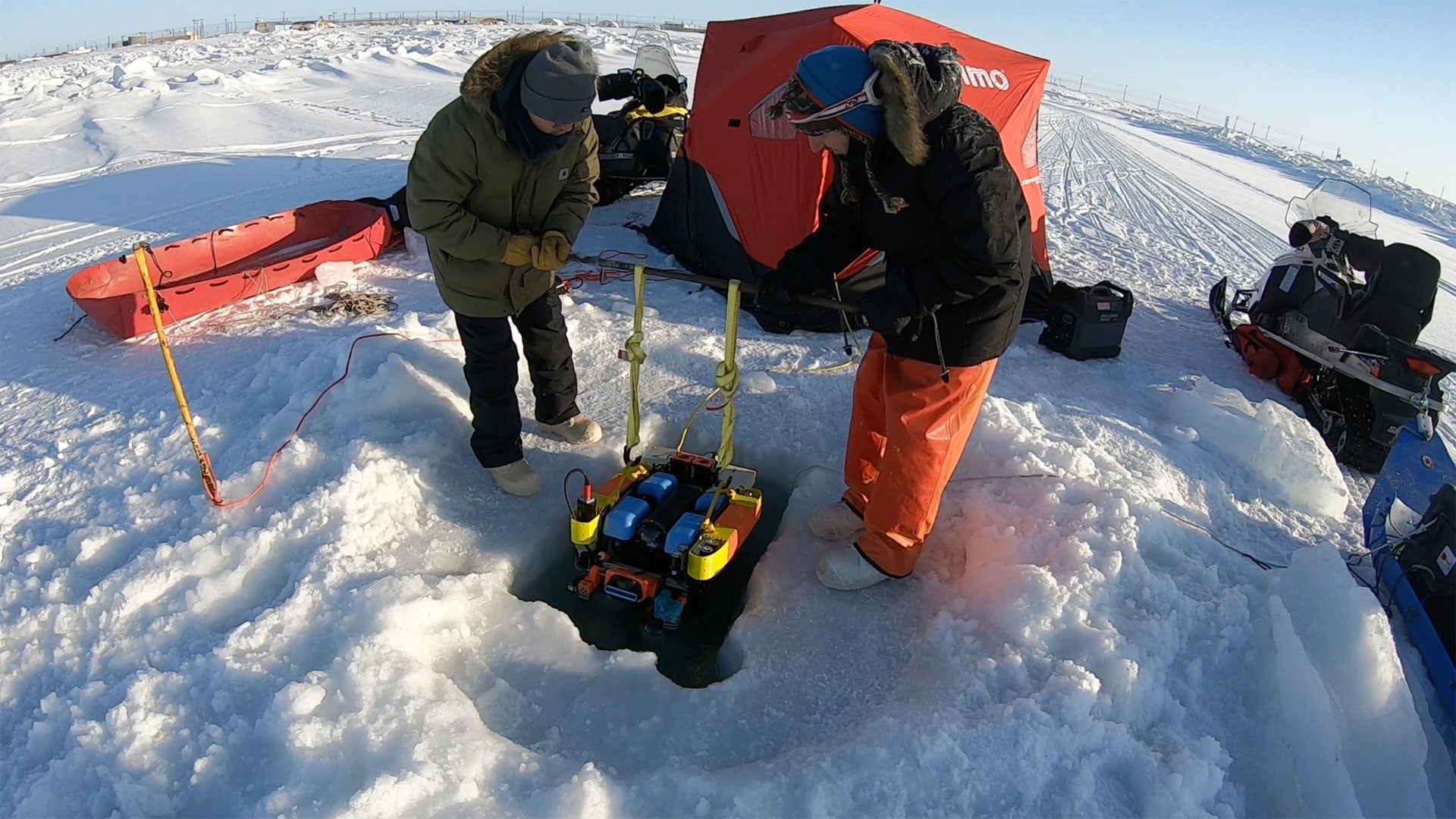Title: EAGER: Navigating UUVs at the Ice-water horizon
Program: Arctic Observing Network, Office of Polar Program, NSF
PI: Mingxi Zhou
Co-PI: Brice Loose
Project Period: September 1, 2020 to August 31, 2022
Abstract: In the Arctic, air-sea interactions and biological-chemical processes in the ocean are strongly affected by the extent and thickness of sea ice cover. Presently, due to safety concerns, data collection involving Unmanned Underwater Vehicles (UUVs) in the Arctic typically operate far away from the ice-water boundary and are recovered using customized systems. As a consequence, critical scientific processes (e.g., phytoplankton blooms and air-sea exchanges at offshore leads in the sea ice) are under-sampled. Challenges still exist for navigating UUVs in the ice-covered ocean, especially in proximity to the ice shelf. The goal of this project is to develop and test a safe, long-distance autonomous UUV-based instrument for under-ice observations and data collection by designing and implementing a new advanced system for near ice-water interface measurements through the use of multiple sensors and in situ decision-making including artificial intelligence algorithms.
This project aims to develop and test an enhanced Unmanned Underwater Vehicle (UUV) system with an accurate ice-relative localization solution, an in-situ collision avoidance re-planning mechanism, and a robust water-opening detection capability. Specifically, the primary objective is to develop new underwater autonomous sampling capabilities that will provide critical measurements and observations for advancing our knowledge about under-ice biological productivity and the physical-chemical transports at the air-ice-water boundary. To make it adaptable to a variety of UUVs, a suite of low size, weight, power, and cost (SWAP-C) sensors will be selected, and the algorithms will be developed using open-source software. The system will localize the vehicle relative to the ice via fusing the inertial measurements and the perception information (e.g., ice topography, texture, and air bubbles). During under-ice operations, the system will also detect ice keels and extrusions, then adapt its path for collision avoidance if necessary. Finally, the designed navigation system will perform a robust detection of water openings in the sea ice. This will allow a safe UUV surfacing event for transmitting data, updating mission plans, and collecting unique cross-boundary measurements at the ice openings. In this project, the developed navigation system will be integrated on a portable underwater robot and tested in a frozen freshwater pond and a subpolar lake. A compact science sensor suite will also be attached to search for under-ice blooms at the ice-water interface. This project also supports an early career scientist and includes a commitment to education and training by involving undergraduate students in data processing and analysis, as well as outreach and science communication activities that engage a broader audience using varied community and media outlets.
Relevant Publications
L Zhao, M Zhou, B Loose, V Cousens, R Turrisi – OCEANS 2021: San Diego–Porto, 2021

